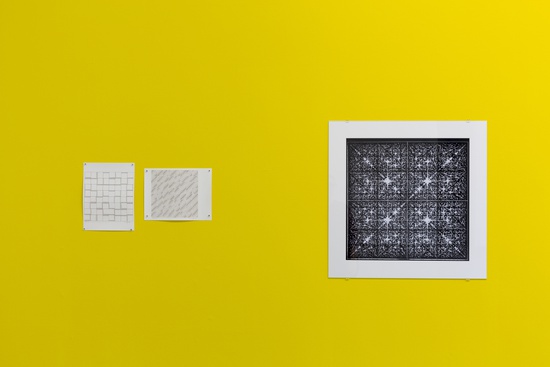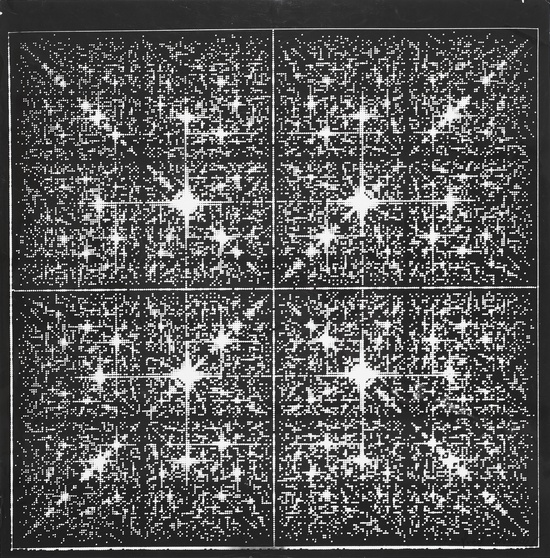Prime Spectrum
Manfred Robert Schroeder
(1968)
Manfred Robert Schroeder (Germany) became interested in computer graphics when he was director of the Acoustics and Speech Research Laboratory at Bell Telephone Laboratories. When he produced graphics, his goal was to let the computers create an image that human beings could not have drawn or painted. How does the computer differ from the human hand in terms of what it can create? This is what Schröder was looking for. While he was on this quest, he began to create images that were interpreted differently depending on the distance from which you looked at them. For example, he made a graphic that consists of letters and words, but which looks like an eye when seen from a further distance.
Thanks to a number of colleagues at Bell, Schröder soon became interested in making graphics purely for artistic purposes. However, he was able to use his knowledge from his physics background. Recurring themes in Schröder’s works of art are, for example, the theoretical relationships between numbers and prime numbers.
The work that is displayed here is also about this theme. Prime Spectrum (1968) is the outcome of a Fourier transformation of dividing pairs of relative prime numbers. The Fourier transformation is a method to convert certain mathematical information into visual shapes. This is done in the form of a continuous spectrum of frequencies, resulting in this star-shaped image. In order to produce this work of art, Schröder received help from his trainee programmers. The computer centre had to be closed for the afternoon to connect all the processors that were available at that time. Even Bell’s most powerful machine did not have enough memory at that time to produce a Fourier transformation of this size. This is something that even the simplest laptop could easily achieve today.



